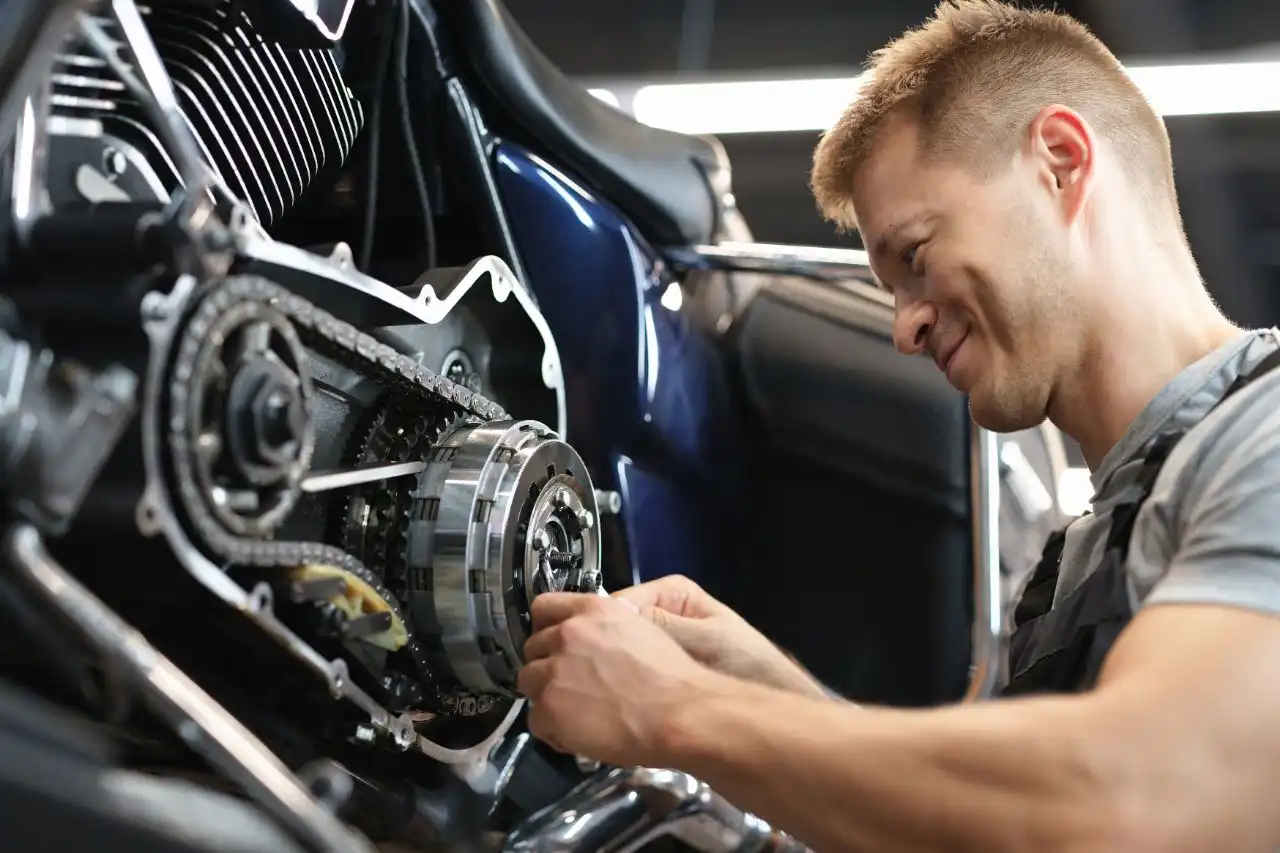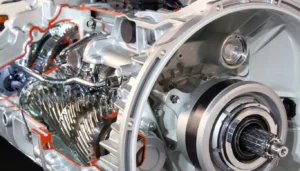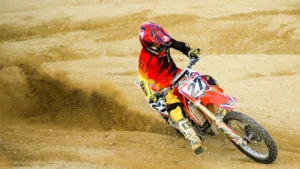Ever felt like your motorcycle is resisting your commands? Like it’s somehow stuck in gear, or it’s not engaging properly? It’s highly likely that what you’re experiencing is the notorious clutch drag. But, what exactly is motorcycle clutch drag, and why is it such a big deal? Let’s dive in and find out!
What is Motorcycle Clutch Drag?
A motorcycle’s clutch is an essential component that controls the transmission of power from the engine to the wheels. It allows you to smoothly engage a spinning engine to a non-spinning transmission by controlling the slippage between them. When the clutch is not releasing fully, it’s called clutch drag. This can make shifting gears difficult, and it could potentially damage your transmission if not addressed promptly.
Keep in mind that clutch drag is a common motorcycle issue, and it’s something every biker encounters every once in a while.
Symptoms of Motorcycle Clutch Drag
Just like a doctor would do, before we dive into the solution, let’s first understand the problem. Do you know the symptoms of a motorcycle clutch drag?
Increased Friction
One of the most common symptoms of a clutch drag is increased friction. You’ll feel it when you’re changing the gears. It feels like something is holding you back, doesn’t it?
Hard to Shift Gears
Does it feel like a Herculean task to switch gears? If shifting gears feels more like a workout, then there’s a high chance that your motorcycle’s clutch is dragging.
Abnormal Noise
Is your motorcycle making strange noises? A motorcycle’s clutch might make a grinding or growling noise if it’s dragging. Unusual noises are often the first signs of a problem. So, listen carefully!
Slipping Clutch
Does your motorcycle seem to have a mind of its own, with the engine revving up but the motorcycle not speeding up in the same proportion? That’s what we call a slipping clutch, and it’s another symptom of clutch drag.
Overheating
Is your motorcycle feeling a bit too hot to handle? Overheating is a common symptom of a dragging clutch. The excess friction causes the clutch to heat up.
Note: You have to remember, though, that these symptoms could also indicate other issues with your motorcycle. So, while they’re a good starting point, a proper diagnosis is always recommended.
You must read: How to Fix a Motorcycle Clutch Cable
Causes of Motorcycle Clutch Drag
Before we delve headfirst into the mechanics of your bike, have you ever wondered, “What exactly causes my motorcycle’s clutch to drag?” Well, you’re certainly not alone in this. Understanding the causes can provide a deeper insight into the solution. So, without further ado, let’s explore these causes, shall we?
1. Misaligned Clutch Cable
A misaligned clutch cable may be the cause of your motorcycle’s clutch drag. This can occur due to normal wear and tear, or due to improper adjustment. Isn’t it surprising how something so minute can lead to a much larger problem?
2. Warped Clutch Plates
Ever heard of warped clutch plates? Yes, they’re a thing and a common cause of clutch drag. The friction and heat generated by the clutch can warp the plates over time, causing them to lose their flat shape. This deformation can cause the clutch to drag, and ultimately impact the performance of your motorcycle!
3. Incorrect Oil Viscosity
Believe it or not, using the wrong oil can also lead to clutch drag. If the oil is too thick or too thin, it can cause the clutch to stick or slip. You might be thinking, “How can oil make such a difference?” Well, it plays a crucial role in the smooth operation of the clutch mechanism.
4. Damaged Clutch Basket
Lastly, a damaged clutch basket can also lead to clutch drag. The clutch basket houses the clutch plates, and any damage to it can affect the clutch’s performance. This might sound ominous, but don’t worry! It’s something that can be fixed.
Remember, the key to a well-functioning motorcycle is regular maintenance and understanding the root causes of any issue. It’s always better to prevent a problem rather than having to fix it, right?
| Cause | Description |
|---|---|
| Misaligned Clutch Cable | Occurs due to normal wear and tear or improper adjustment. |
| Warped Clutch Plates | Friction and heat generated by the clutch can warp the plates over time. |
| Incorrect Oil Viscosity | Using oil that is too thick or too thin can cause the clutch to stick or slip. |
| Damaged Clutch Basket | Damage to the clutch basket can affect the overall performance of the clutch. |
Now that you’re versed in the common causes of motorcycle clutch drag, you’re one step closer to resolving the issue. But the question remains, “How do I fix it?” Don’t fret, we’ll tackle that next!
Tools Required for Fixing Motorcycle Clutch Drag
Before you dive headfirst into the nitty-gritty of fixing your motorcycle clutch drag, let’s make sure you have all the necessary tools on hand. It’s like cooking a fancy meal, you wouldn’t start without having all your ingredients ready, would you? So, let’s not waste any time and dive straight into the list!
Tools You’ll Need
- Wrenches: You’ll need a set of wrenches. A combination of open-ended and box-end wrenches should do the trick.
- Screwdrivers: Flat head and Phillips head screwdrivers will be needed.
- Spark Plug Socket: This is a special socket designed to remove and install spark plugs.
- Clutch Holding Tool: This tool is used to hold the clutch hub and basket to prevent them from spinning.
- Feeler Gauge: A feeler gauge is used to measure gap widths.
- Torque Wrench: A torque wrench allows you to apply a specific amount of torque to a nut or bolt.
Now that you’ve got your toolbox filled with all these essentials, you’re all set to fix that annoying clutch drag. But wait! Shouldn’t we know what we’re getting into? Sure we should! So, let’s get a brief overview of what clutch drag actually is.
Understanding Clutch Drag
Motorcycle clutch drag is a common issue that occurs when the clutch fails to disengage completely, even when the clutch lever is pulled all the way in. This can result in a bike that’s hard to shift or doesn’t want to stay in gear. The problem can be caused by a variety of factors, including a misadjusted clutch, worn clutch components, or even the wrong type of transmission oil.
Isn’t that quite a handful? But don’t worry, you’re not alone in this. We’re here to break it down for you, so rest easy and keep reading!
Step-by-Step Process for Fixing Motorcycle Clutch Drag
There’s nothing quite as exhilarating as the purr of a well-tuned motorcycle, but what happens when that roar is replaced by a telltale clutch drag? Fear not, dear biker! This guide will walk you through the step-by-step process of fixing motorcycle clutch drag, right at the comfort of your own garage. Let’s get your ride back in top shape, shall we?
Understanding What Clutch Drag Is
Ah, the dreaded clutch drag! But what exactly is it? Well, in simple terms, clutch drag happens when your motorcycle’s clutch doesn’t completely disengage even when you pull the lever. It can make changing gears a real nightmare and can even cause your motorcycle to move when it’s in gear, even if the clutch lever is pulled in. Sounds like a serious problem, right? Well, the good news is, it’s usually a pretty straightforward fix.
Remember: Always safety first! Use the correct tools, wear safety gear, and if you’re unsure about anything, consult with a professional.
Diagnosing the Problem
Before you can fix the problem, you need to make sure you’re dealing with a clutch drag. Here are a few symptoms to look out for:
- Your motorcycle is difficult to get into or out of gear.
- The bike tries to move while it’s in gear, even though the clutch lever is pulled in.
- The engine stalls when you try to put it into gear.
- There’s a noticeable loss of power when riding.
Getting Your Hands Dirty: The Fix
Now that we’ve diagnosed the problem, let’s roll up our sleeves and get to work! Here’s a step-by-step guide to fixing that clutch drag:
1. Prepare Your Work Area:
Clean your workspace and make sure you have all your tools at hand. You’re going to need a socket set, pliers, a screwdriver, and some fresh motorcycle oil.
2. Remove the Clutch Cover:
Start by removing the clutch cover. This usually involves removing a series of bolts. Be sure to keep track of where each bolt came from – they might not all be the same size!
3. Inspect the Clutch:
Take a look at the clutch. Are the clutch plates warped or excessively worn? If so, they’ll need to be replaced.
4. Adjust the Clutch Cable:
Sometimes, a clutch drag can be fixed by simply adjusting the clutch cable. There should be a little bit of free play when you pull the clutch lever. If there isn’t, try loosening the cable.
5. Replace the Clutch Plates:
If adjusting the cable didn’t work, or if the clutch plates were worn or warped, you’ll need to replace them. Make sure to replace them one at a time and in the correct order.
6. Reassemble and Test:
Once you’ve made your adjustments or replaced the clutch plates, it’s time to put everything back together. Then, start up your bike and take it for a test ride. If the clutch drag is still there, you may need to repeat the process or consult with a professional.
Common Motorcycle Clutch Problems and Solutions
| Problem | Solution |
|---|---|
| Clutch drag | Adjust or replace clutch plates |
| Clutch slippage | Replace clutch plates or springs |
| Hard to shift gears | Check and adjust the clutch cable |
| Loss of power | Inspect and clean the clutch system |
Pro tip: Regular maintenance is key to keeping your motorcycle running smoothly. Make sure to check your clutch system regularly for any signs of wear and tear.
Fixing a motorcycle clutch drag may seem like a daunting task, but with the right tools and a bit of patience, you’ll be back on the road in no time. Remember, every rider should know the basics of motorcycle maintenance – it’s all part of the journey. So, what are you waiting for? Grab your tools and let’s get that clutch back to its prime!
Conclusion: Successfully Fixing the Motorcycle Clutch Drag
If you’ve made it this far, congratulations! You’ve successfully navigated your way through the process of fixing a motorcycle clutch drag. Bet you didn’t think you could do it, huh? But, lo and behold, your motorcycle is now in mint condition, running as smoothly as ever. So, what have we learned from this incredible journey?
Key Takeaways
- Diagnosis: The first step in the process was diagnosing the problem. This involved checking for signs of clutch drag, such as a bike that’s difficult to shift or doesn’t move at all when in gear.
- Dismantling the Clutch: You learned about the intricacies of your motorcycle by dismantling the clutch. This step-by-step process was crucial in understanding the inner workings of your bike. Remember how you removed the clutch cover, loosened the bolts, and carefully removed the clutch plates?
- Identifying and Fixing the Problem: After dismantling the clutch, you identified the problem area. Perhaps the clutch plates were warped, or the clutch basket had grooves. You then replaced or fixed the problematic parts and reassembled the clutch.
- Testing: Last but not least, you tested the motorcycle to ensure the issue was resolved. The sense of accomplishment when you saw your bike running smoothly was second to none.
The Road Ahead
Now that you’ve been through this process, you’re better equipped to handle similar problems in the future. Isn’t it great to be self-reliant and not have to rush to a mechanic at the first sign of trouble?
Remember, practice makes perfect. The more you tinker with your motorcycle, the more comfortable you’ll become with these processes. So, don’t shy away from getting your hands dirty!
Maintenance is Key
Even though you’ve successfully resolved the clutch drag issue, it’s important to maintain your motorcycle regularly. This can help prevent problems from cropping up in the first place. Here’s a basic maintenance checklist to keep your bike in top shape:






